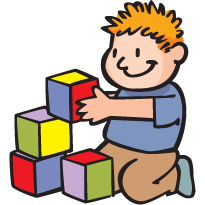Boston Children's Museum
308 Congress Street, Boston, MA 02210
617-426-6500
© Boston Children’s Museum 2025
Website Design by JackrabbitBy observing buildings and construction sites, students can see the shapes, forms and materials used to create the structures we live, work and play in. Using dowels and rubber bands, your students will sharpen their engineering skills as they work together to create a series of structures. Working collaboratively, students will communicate with each other as they investigate the variables that affect their structure, test its sturdiness and improve upon their design.
Make sure you have enough dowels and rubber bands for each team (15-20 dowels, 15-20 rubber bands per team).

If you did the activity, refer to the list that the students created in the Structures activity, detailing their ideas on what shapes are strongest. Ask them if they think these rules apply to all materials or just to paper and straws.
If you are beginning with this activity, and if the option is available to you, you should consider taking a walk in the neighborhood around your afterschool center and encouraging your students to really take notice of the buildings. Who uses these structures? What are they made of? What shapes and colors do they see? Your children may notice that the shapes most often visible in completed buildings are squares and rectangles. If you can, bring your students to a building construction site. What shapes do they see in the exposed beams?
Once back in your classroom, start the activity by having a discussion about what types of shapes they saw in buildings in the neighborhood. Ask the children which shapes they think are the strongest. You may get several different answers. Make sure to write all answers up on chart paper or a dry erase/chalk board.
Challenge your students to build large structures using dowels and rubber bands.
After 10–15 minutes of activity, stop your students and bring them together to discuss what they’ve done so far. This discussion should last no more that a few minutes. What have they discovered? Have them share ideas, successes and challenges with each other, and look for ideas around connecting dowels together with the rubber bands, which shapes they are using, etc.
After this brief discussion, send the teams back to their structures to finish their construction. Once the frame is erected, they can fill in portions, cover it, decorate it or build additional parts with other materials that you provide. Have each team share their structure and ask them to talk about their design, highlighting something that they changed as they were building.